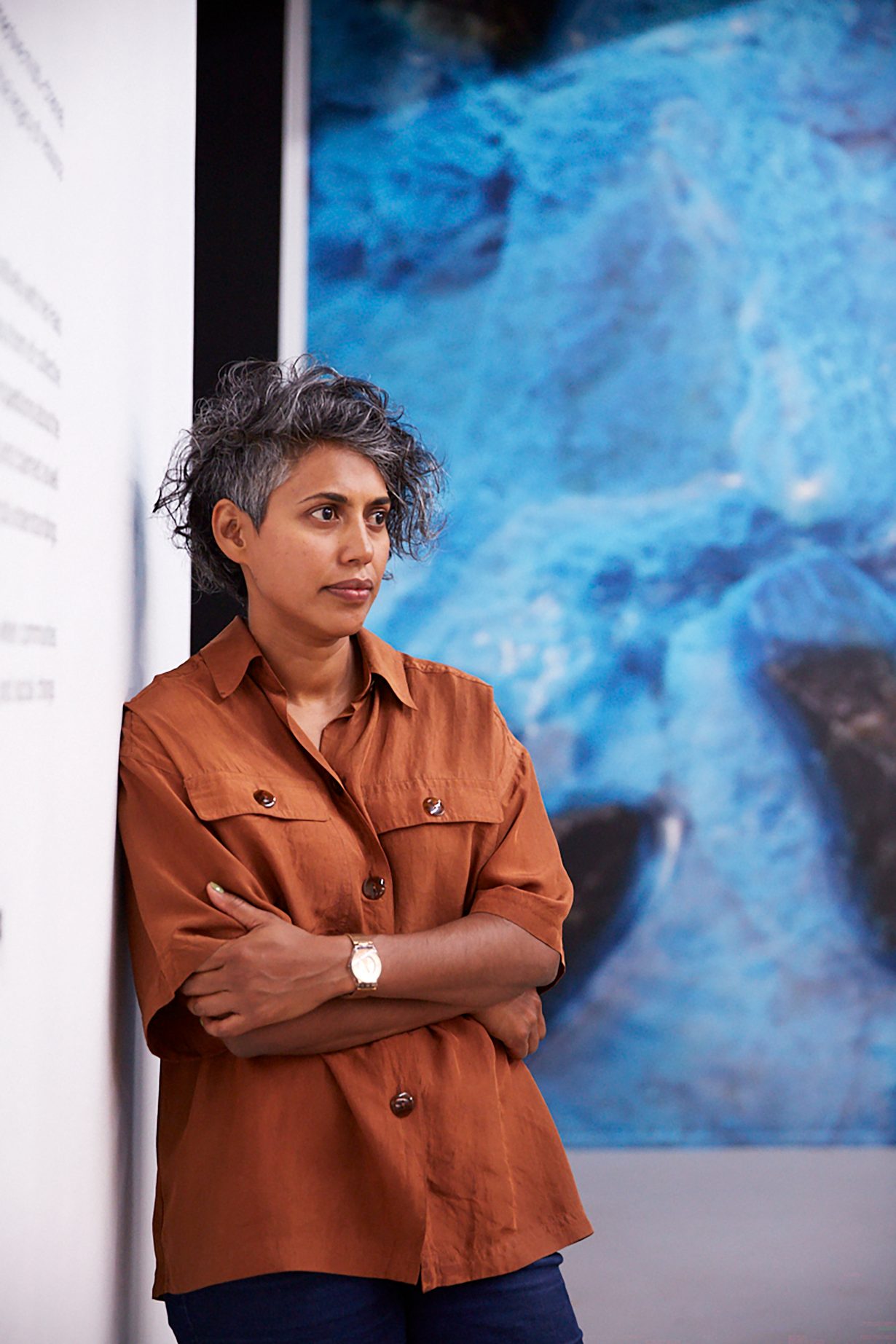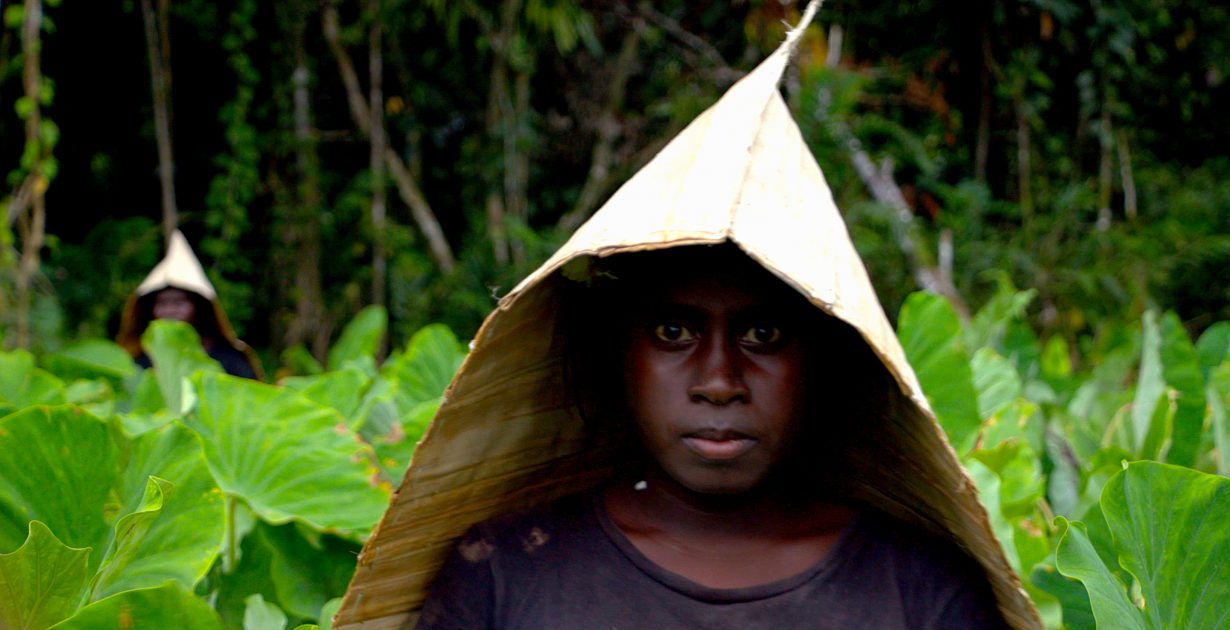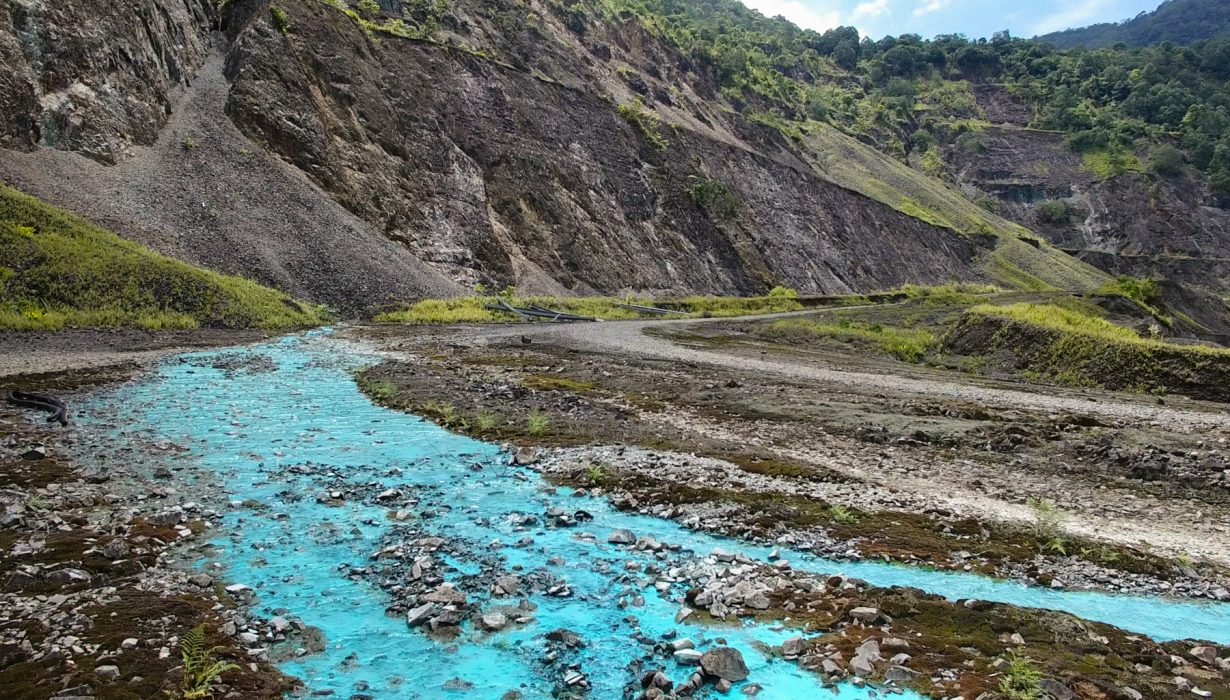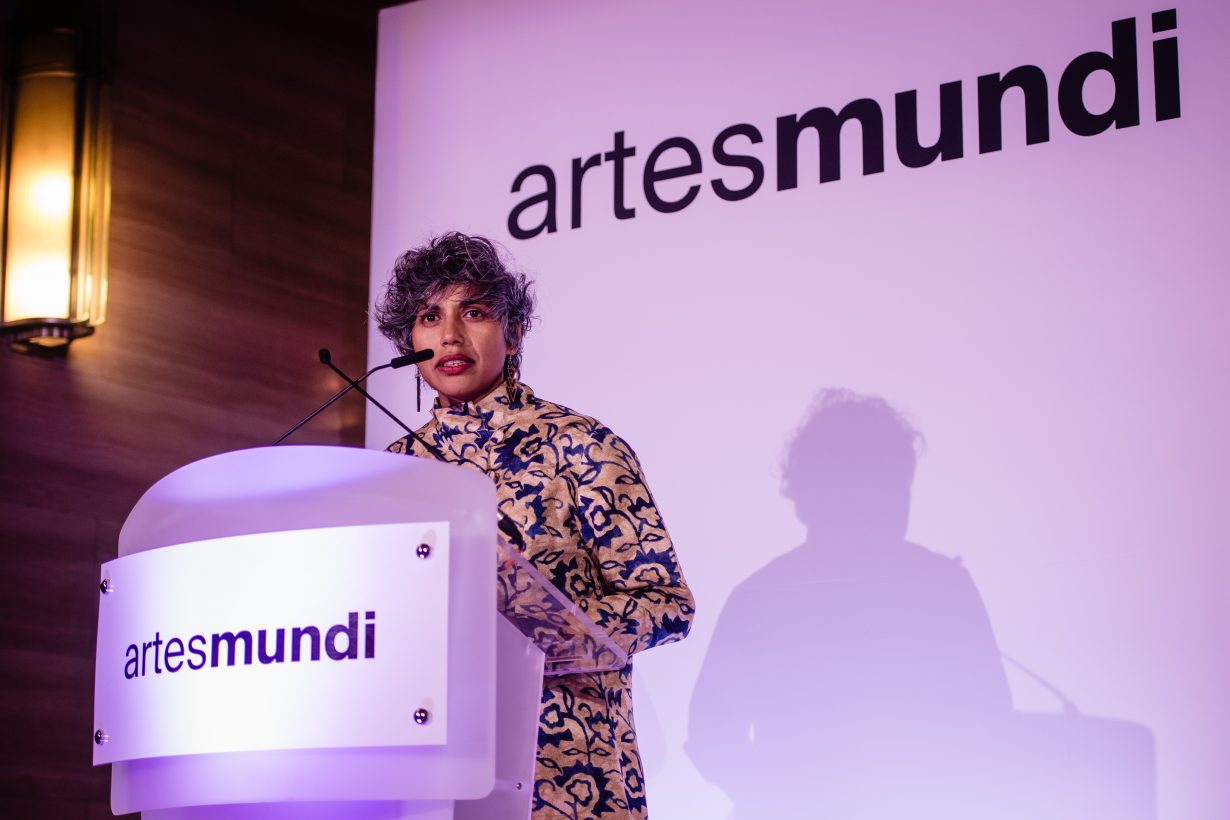
Taloi Havini is the winner of Artes Mundi 10. She was nominated alongside Mounira Al Solh, Carolina Caycedo, Alia Farid, Naomi Rincón Gallardo, Rushdi Anwar and Nguyễn Trinh Thi. This year’s 10th anniversary prize is presented with the Bagri Foundation. An exhibition of work by the nominees is now open across five venue partners in Wales, with the seven artists presenting major solo projects that ‘collectively address issues surrounding land use, territory and displacement through histories of environmental change, conflict and enforced migration, conditions that speak to us all today’. ArtReview sits down with the artist to discuss the award and what it means for her practice. ArtReview is a media partner of Artes Mundi 10.
ArtReview I want to congratulate you on winning this year’s prize. It’s a tremendous accomplishment. But before we speak about that, could you to tell me a little bit more about the projects Habitat [2017] and the new photographs from Where the rivers flow [(Panguna, Jaba, Pangara, Konawiru), 2024] that are being presented at Artes Mundi?
Taloi Havini Thank you. Habitat is part of an ongoing series of immersive moving image works where I document the changes that have taken place as the result of largescale open-cut mining, on the South Pacific Island of Bougainville, where I was born. The series – which consists currently of three works – engages with not only the cavernous pit, created by the mining company Bougainville Copper Limited [BCL] but also the devastation caused to the natural ‘habitats’ downstream – all the way to the West Coast and the Ocean, these downstream areas were badly affected as the result of the BCL dumping the mines toxic waste into the Jaba River. What was once pristine waters that provided customary landowning communities with fresh water is now poisoned. Once virgin forest and gardens – crucial to the subsistence agriculture of these communities – is now swamplands.
The work shown at Mostyn, Llandudno – Habitat – is the second work in the series and takes the form of an immersive three-channel video that shifts between different perspectives, contrasting the birds eye view of drone footage, used to scientifically map a landscape with the lived experience of the customary landowners on the ground. The landowners asked me to use the drone. Because of the huge amount of cloud cover that exists over this part of Bougainville, there’s no way to see from satellite images the damage that mining has caused – a huge sort of waste area. The only way to do it was through drone footage. We were literally backpacking through mountains and wading through crocodile-infested rivers, just to launch a drone right up above us to see the scale. And so, what’s included [in Habitat] is that kind of perspective, but it also shows the matrilineal landowning women actively still living there. These women continue to resist the extractive agendas of multimillion-dollar companies by staying on their ancestral land. Commissioned for an exhibition in Sydney, Australia [The National], Habitat has been shown in Canada, Hawaii and in Paris – at the Palais de Tokyo – but never in the UK. I am grateful to be able to show it in London [at the Barbican’s RE:SISTERS: A Lens on Gender and Ecology] and in Llandudno for Artes Mundi. It is important to me that audiences from this historically important centre of the artworld, see through the lens of an islander what it’s like to live in a habitat so deeply impacted by extraction.

Photo: Stuart Whipps

Courtesy the artist and Silverlens, Manila / New York
The photographs in Where the rivers flow (Panguna, Jaba, Pangara, Konawiru) [2023] draw on the archive I have created sinch 2014 shooting the Habitat series. They are the frames outside of the amin action of the video and provide audiences with an expanded view of the people, landscapes and culture of these locales. I have run the small images around the room like a frozen filmstrip.
The other work that I’m showing is at Chapter [in Cardiff]: Hyena (Night and Day) brings together an image from my parents’ photographic archive of my aunties walking on the reef – blown up larger than life – with stills of living coral taken from a video that I created looking specifically at Hyena – the reef rituals – around coral spawning – that my clan has practised every year since time immemorial. The coral stills are presented as luminous light boxes, emphasising the coral’s brilliant colour – under threat – like our rituals because of warming oceans.
AR What does it means to show your family’s archive in the UK, for the first time? Are there any new investigations that have arisen from this form of showing?
TH It was important for me to show the role of women. Where I come from is matriarchal, where land is passed through the female line. I grew up surrounded by strong women who had chiefly influence over our clans collective life. Women play a part in determining history and planning the future. You can see this in my family’s photograph albums and slides. It was important that the images that I use are personal images. They are not an abstract political statement on women’s rights but a quieter demonstration of the way our societies work.
I wanted to look back, to see how women in the 1960s and 70s related to land. What you’re seeing in Chapter is a large blown-up picture of a slide from the 70s of three aunties, women, who are out there gathering food from the reef. Looking at archives and recovering them – whatever state they’re in – and blowing them up: these are important acts of ritual for me.
Then in Habitat we see Agata, a landowner from one of the areas most impacted by poison of the mine’s tailings. At the end of the film. Agata really looks directly into the lens of the camera. You’re watching this woman’s journey of continuing to work her land, but you’re also meeting her gaze directly. She is not passive.
AR These works seem personal. Has the personal always been a touchstone of your practice, or is this a more recent investigation?
TH I feel that the state of the planet is in such disarray. As Indigenous peoples we’re still feeling the impacts of colonisation. It’s taken me my whole adult life to fully understand that our Bougainvillean culture, a matriarchal culture, is really a strength. It looks to nurture across community and provide for collective living. It’s been very significant for me to realise this. My father always said, ‘You know, as a descendant of the Nakas clan, you will inherit responsibility over this land, and it flows through the female line.’ So there’s a real strength in that matriarchal resistance to patriarchal land tenure and since colonisation, our pride has grown stronger in rejecting external attempts to displace women from being landowners. I can only speak from this viewpoint.

AR You’ve been working with members of a community. Can you speak more about who you’ve been working with and how that has informed your practice, your ways of thinking?
TH It’s part of both my culture and my practice to recognise the importance of being part of a collective and working together to create something. The Habitat series has always involved me working very closely with the customary landowners of the places I am filming in. I have a background in participatory film making and always ensure that community are more than subjects of the videos I create.
One of my recent projects titled Reclamation [2020] aligned with referendum on Independence for Bougainville in 2019. I spent a month in my mother’s house, working with members of my clan, creating a workshop around natural materials. We harvested the cane and vines from our bush, called esma (in Hakö language)and were able to tell stories around how we used [these materials] to create ocean- going vessels. Working alongside my uncles and cousins, I spent time just drawing with the esma, creating new sculptures. Everything I do requires my chief and clans’ consent and involvement, it doesn’t matter what material it is.
I’m interested in how shell money, for example, looks at wealth. How it was used traditionally in the Pacific as an economy. I was interested in the fact that we have an economy based on the creation and maintenance of relationships, rather than the idea of a fixed currency. I was having conversations with my elders about these other types of currency and resources. I wanted to create a sculptural work that spoke to this Indigenous economic system and the importance of collective labour in the creation of these ties. Having these philosophical conversations with my elders and family is part of my practice.
I’m continuing to do that today through looking at collections in museums that hold our traditional artefacts. I’m really interested in thinking with community back home about the value of culture.
AR What are your hopes for your art in general? What do you think the purpose of art is and what do you see for your practice?
TH Wow, that is such a big question. I’m just thinking and meditating on the idea of what I really want to bring into this world that we share. As an artist I look for beauty in the world, but I also want to question things and I am continuously seeking out new ways of understanding and just being in the world.
AR There’s a lot of localities, I think, involved [in your work], which is interesting set against more globalised ideas of industrialisation and exploitation of land, for example. It’s a good counter to this sort of homogeneous idea of development and land exploitation.
TH Yes, absolutely. I think our [Bougainvilles] strength is this connection to land and place. There is a uniqueness to how strong our Bougainvillean culture and people are. A resilience. Resourcefulness is one of the key lessons that I’ve learned from witnessing my people and culture deal with the challenges they have been faced with. During the ten-year military blockade, Bougainvillean’s came up with a saying in pidgin (creole) ‘Mekim na save’, which translates to English as “Learn by doing”. This is also very much the work of an artist: to learn things while you make… it’s your practice. You stay grounded always working with what you have available to you.
AR Are there any other artists groups or individuals who serve as inspiration for your work?
TH I went to the Tate Brittan and saw the Women in Revolt! exhibition. It’s such a great show! Walking through with one of the exhibiting artists and dear friend Janis Jefferies, I realised how much I have been influenced by Zarina Bhinji and Mona Hatoum over the years. Last year, I was in the exhibition titled, RE/SISTERS at the Barbican and it was refreshing to be shown amongst other BIPOC artists. Currently, I have work specific to my region of Oceania within the intergenerational exhibition titled sis: Pacific Art 1980 – 2023 at the Queensland Art Gallery | Gallery of Modern Art. Its affirming to see works by people that I know and inspiring to be learning about new ones.

AR Moving on to the Artes Mundi prize. Again, congratulations. What does this mean for you and your practice?
TH The prize was really, really unexpected. I am not quite sure! I mean, I just feel quite humbled about it all. As an artist, you just keep doing what you’re doing without thinking about what it means to be recognised in this way. There is a responsibility to keep practising – regardless of any recognition. The prize will, however, enable me to continue the kinds of ambitious work that I like to do, and to stay deeply grounded, being back on my land. I came to Wales straight from Bougainville, which is very remote and where I had a month of not looking at any media. Coming here and seeing increased deaths and devastation in Gaza and the seeing the people of Palestine suffering made me feel helpless. Indigenous peoples around the world have been struggling for a long time, like the people of West Papua who have been silenced and forgotten. The economic situation in Papua New Guinea is at its lowest point. Bougainville people are still recovering from war and trauma and is very much still a post-conflict society.… I don’t really know what to say. It’s just humbling under these circumstances.
AR Do you have any new projects on the horizon?
TH Some of my projects are embargoed for now. However, funds from this prize will enable me to pursue some ideas that have been brewing for a while with artists in Bougainville. To have the freedom to explore ideas without restriction. Placing people with imagination and collaboration is quite exciting.
For Artes Mundi 10, Taloi Havini is showing works at Mostyn, Llandudno and Chapter, Cardiff through 25 February